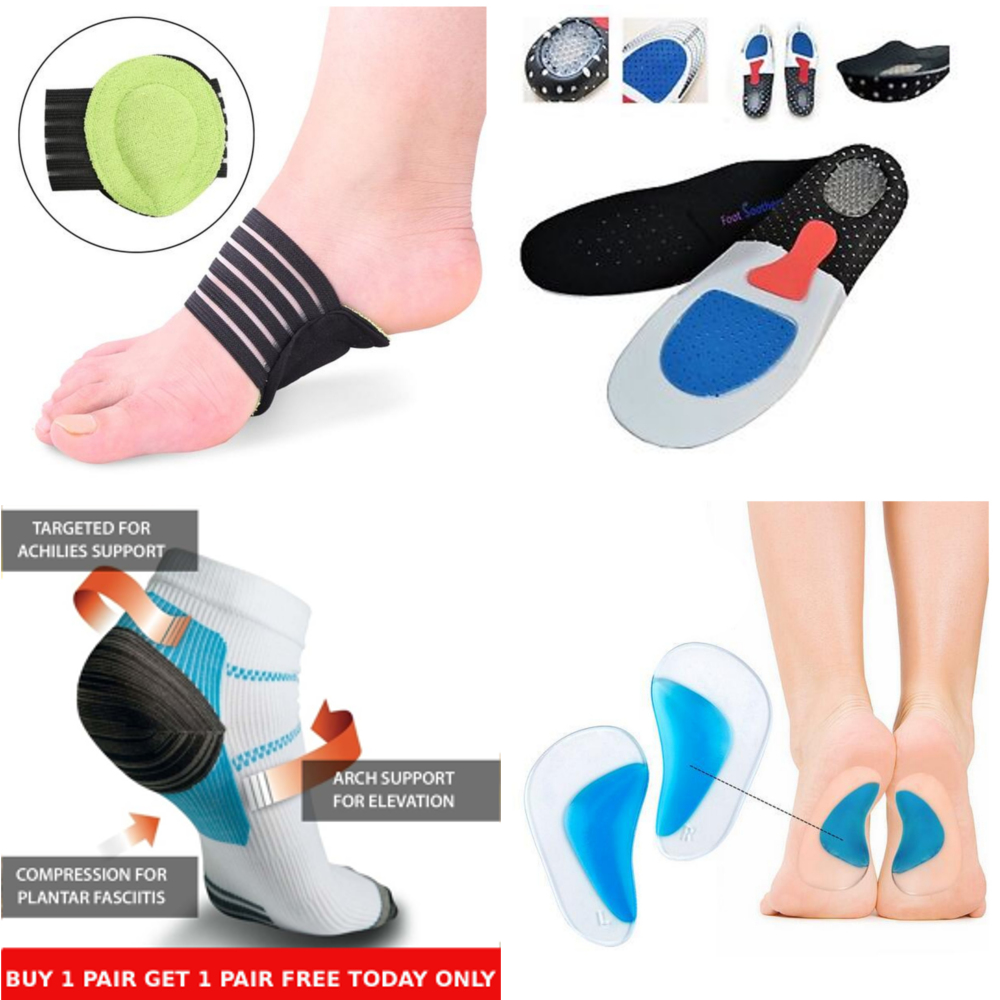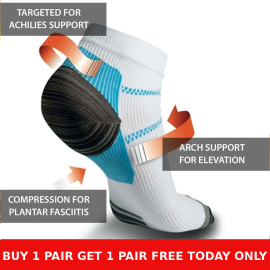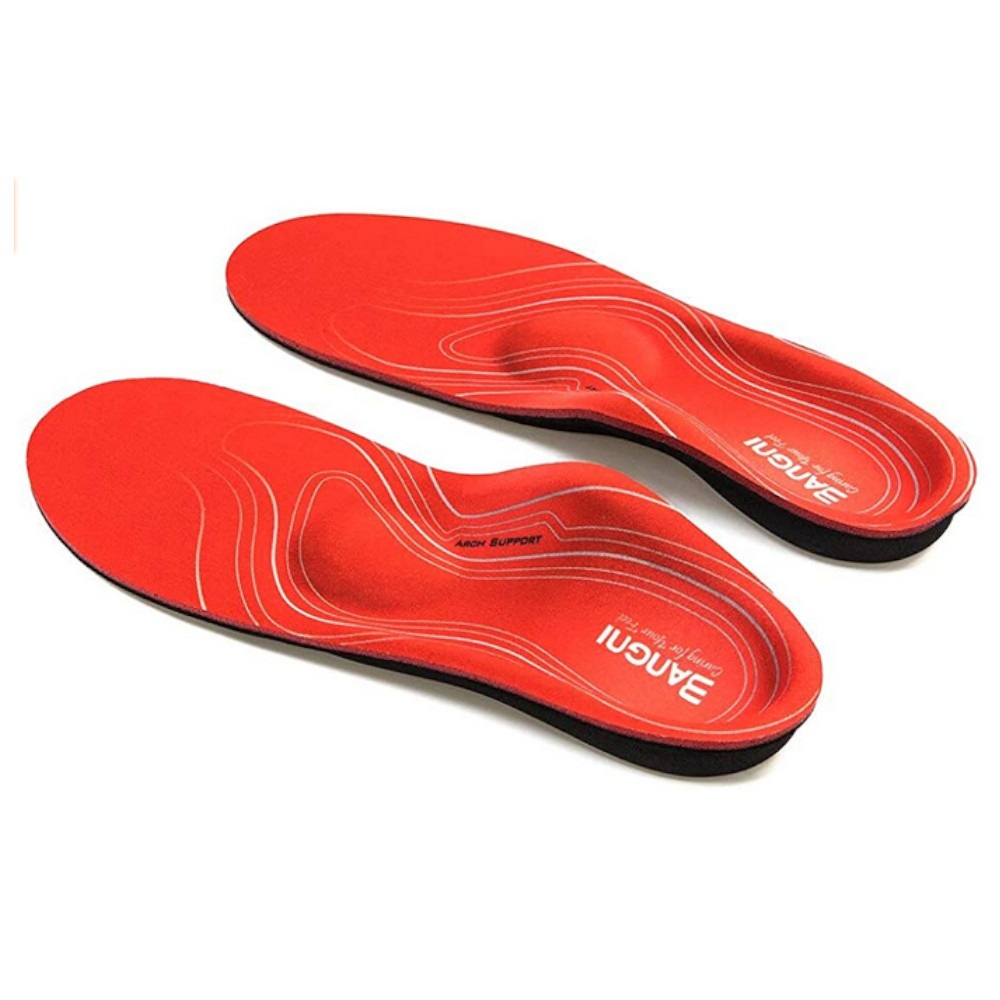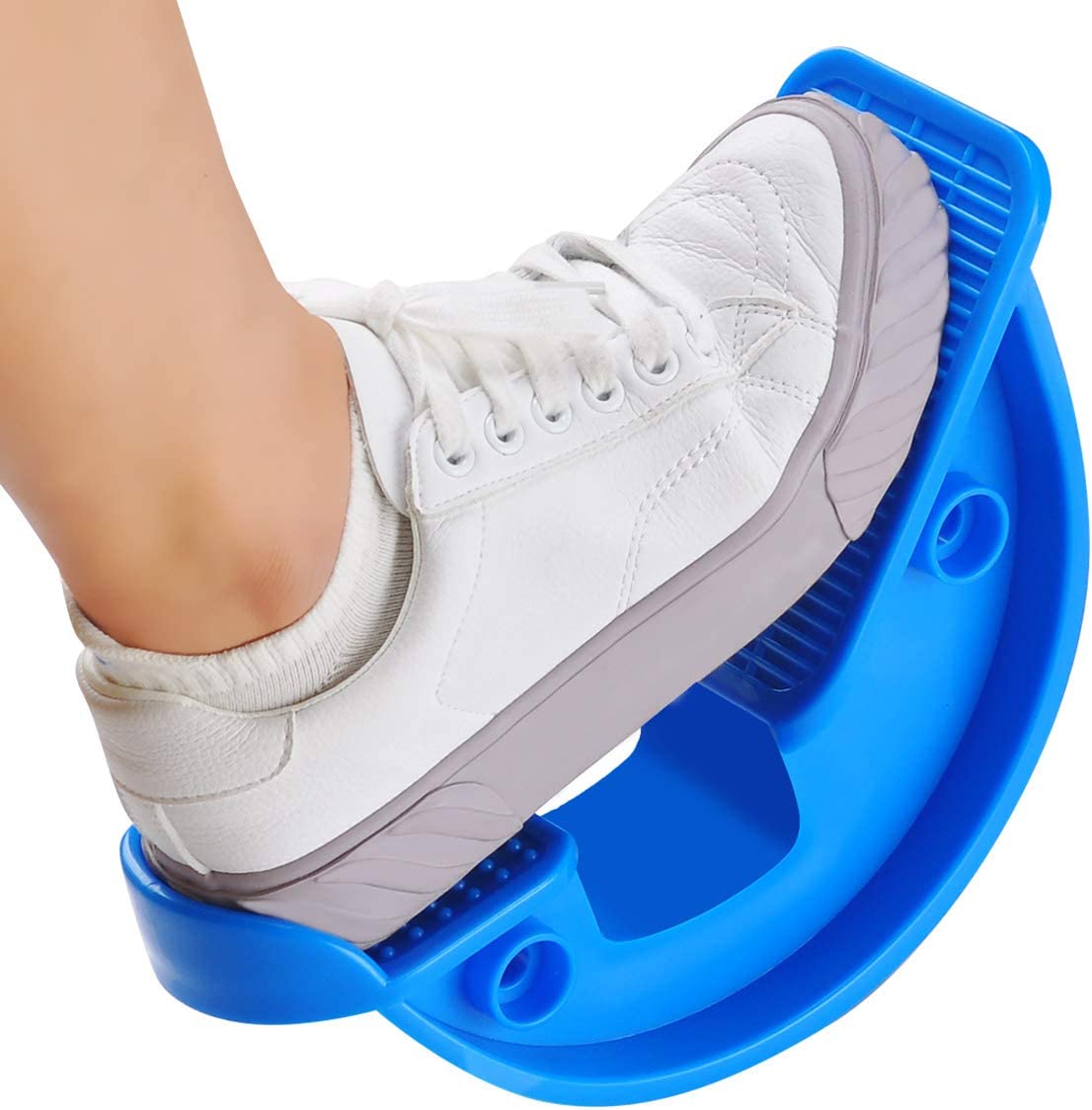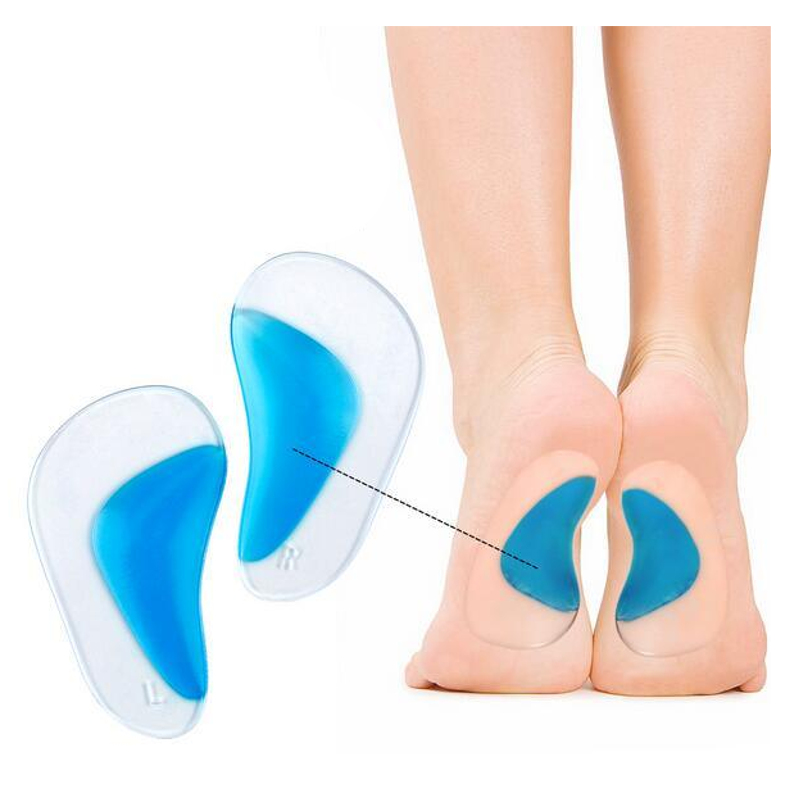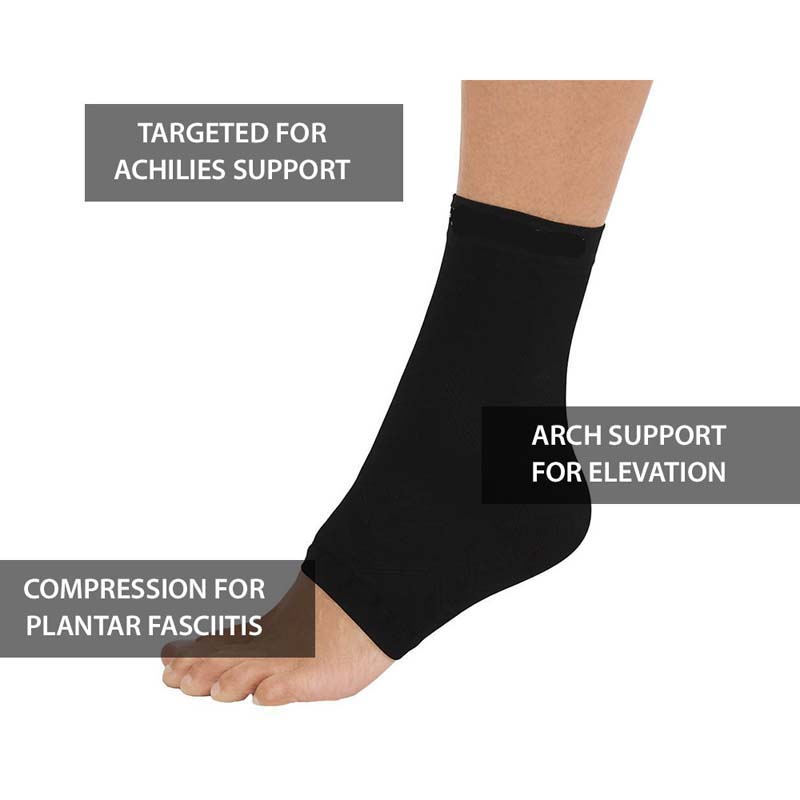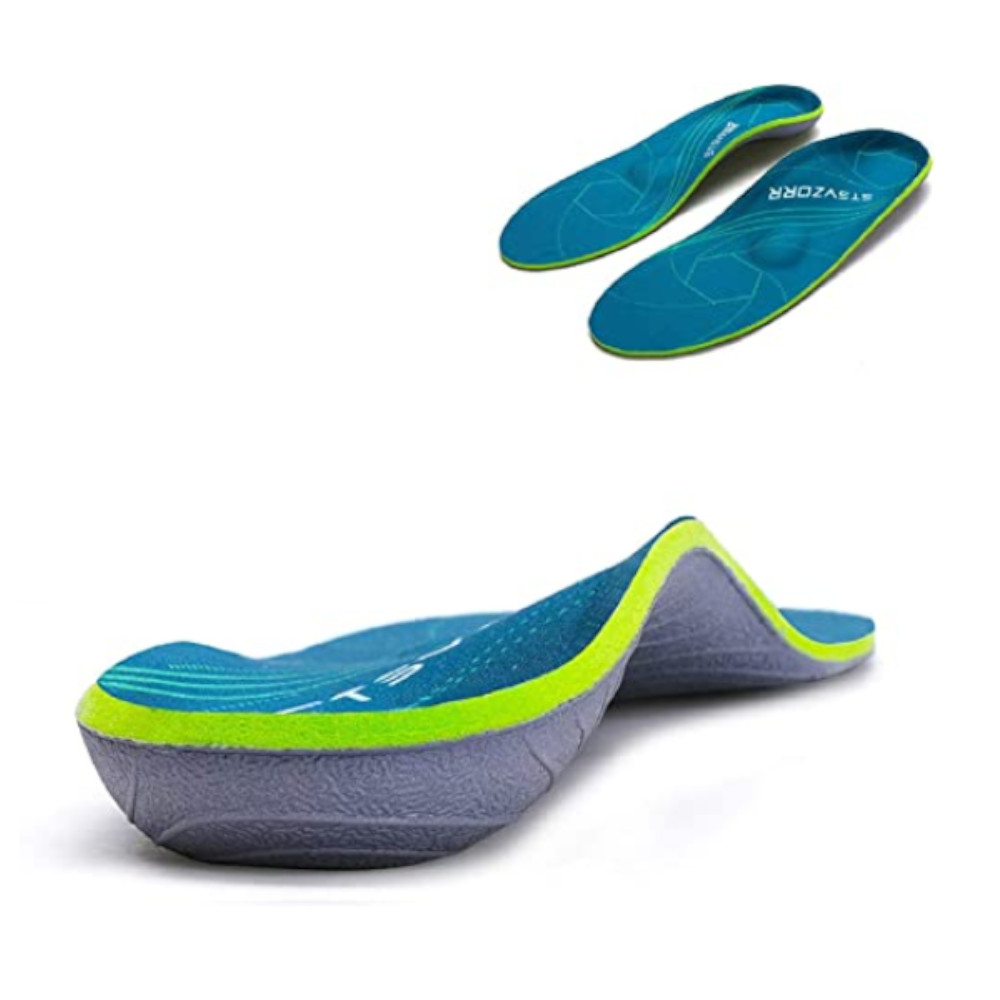The Complete Guide to Plantar Fasciitis Treatment Options

Featured Products for Plantar Fasciitis Foot Pain Relief
Dealing with the persistent pain of plantar fasciitis can be a daunting experience, but the good news is that there are various treatment options available to help alleviate symptoms and promote healing. In this comprehensive guide, well explore a range of plantar fasciitis treatment options, from at-home remedies to professional interventions, to help you make informed decisions on managing this common foot condition.
-
Rest and Ice:
-
Rest: Giving your feet adequate rest is crucial for recovery. Avoid activities that exacerbate pain, and consider reducing overall physical strain on your feet.
-
Ice: Applying ice to the affected area can help reduce inflammation. Use an ice pack or a frozen water bottle, and gently roll it under your foot for 15-20 minutes.
-
-
Stretching Exercises:
- Incorporate regular stretching exercises to improve the flexibility of the Achilles tendon and the plantar fascia. Focus on exercises that target the calf muscles, Achilles tendon, and the plantar fascia itself.
-
Orthotic Inserts:
- Custom or over-the-counter orthotic inserts can provide additional arch support and cushioning, helping to distribute pressure more evenly across the foot and alleviate strain on the plantar fascia.
-
Supportive Footwear:
- Invest in shoes with proper arch support and cushioning. Avoid high heels and shoes with inadequate support, as they can contribute to the development of plantar fasciitis.
-
Night Splints:
- Night splints help keep the foot in a dorsiflexed position while sleeping. This can prevent the plantar fascia from tightening overnight and reduce morning heel pain.
-
Physical Therapy:
- A physical therapist can guide you through specific exercises to strengthen the muscles in your feet and legs, improving overall foot function and reducing plantar fasciitis symptoms.
-
Anti-Inflammatory Medications:
- Nonsteroidal anti-inflammatory drugs (NSAIDs), such as ibuprofen, can help reduce pain and inflammation. However, its essential to use them as directed and consult with a healthcare professional if you have concerns.
-
Cortisone Injections:
- For severe cases, cortisone injections may be recommended to reduce inflammation and provide temporary relief. This intervention is typically administered by a healthcare professional.
-
Extracorporeal Shock Wave Therapy (ESWT):
- ESWT is a non-invasive procedure that uses shock waves to stimulate healing in the affected area. Its often considered for cases that havent responded to conservative treatments.
-
Surgery:
- Surgical intervention is considered in rare cases where conservative treatments have failed. Procedures may involve releasing the tension in the plantar fascia or removing heel spurs if present.
Conclusion:
Finding the right combination of plantar fasciitis treatments often involves a multifaceted approach. Remember that individual responses to treatments vary, so patience and consistency are key to achieving long-term relief. If youre experiencing persistent or worsening symptoms, consult with a healthcare provider to discuss a personalized treatment plan tailored to your needs.
Featured Products for Plantar Fasciitis Foot Pain Relief
Latest Blogs
- Taking a Stand Against Heel Pain: Practical Solutions
- Happy Heels, Happy Life: Banishing Foot Pain for Good
- The Road to Relief: Strategies for Combating Heel Pain
- Heel to Toe Wellness: Tackling Foot Pain Head-On
- Foot Pain Decoded: Understanding the Signals Your Feet Send
- Soothing Steps: Natural Remedies for Heel and Foot Pain
- Putting Your Best Foot Forward: Managing Heel Discomfort
- The ABCs of Happy Feet: Beating Heel and Foot Pain
- From Heel to Toe: Navigating Common Foot Pain Issues
- Taking a Step Back: Causes and Remedies for Heel Pain
- Footloose and Pain-Free: Tips for Happy Heels and Feet
- Soleful Solutions: A Guide to Alleviating Heel and Foot Discomfort
- Stepping Into Comfort: Understanding Heel and Foot Pain
- From Pain to Progress: Inspiring Plantar Fasciitis Journeys
- Living a Full Life with Plantar Fasciitis: Success Stories
- Plantar Fasciitis and Exercise: Finding the Right Balance
- The Impact of Stress on Plantar Fasciitis Symptoms
- Plantar Fasciitis: When to Seek Professional Help
- Inflammatory Foods and Plantar Fasciitis: What to Avoid
- Ergonomics and Plantar Fasciitis: A Comprehensive Guide
- The Importance of Rest in Plantar Fasciitis Recovery
- Traveling with Plantar Fasciitis: Tips for Happy Feet
- Plantar Fasciitis and Your Sleep: Improving Rest Quality
- The Psychological Aspect of Living with Plantar Fasciitis
- Plantar Fasciitis and High-Impact Activities: Navigating Risks
- How to Stay Active with Plantar Fasciitis: Practical Tips
- Plantar Fasciitis and Aging: Strategies for Seniors
- Cryotherapy for Plantar Fasciitis: Icy Relief for Your Feet
- Aquatic Exercise for Plantar Fasciitis: Dive into Healing
- Mindfulness and Meditation for Plantar Fasciitis Relief
- Heel Pain 101: A Guide to Plantar Fasciitis
- Finding Relief - Plantar Fasciitis Home Remedies
- The Emotional Toll of Chronic Plantar Fasciitis
- Post-Workout Foot Care for Plantar Fasciitis Sufferers
- DIY Foot Massage Techniques for Plantar Fasciitis
- From Diagnosis to Recoveryc- Navigating Plantar Fasciitis
- Plantar Fasciitis in Children Signs and Solutions
- Plantar Fasciitis and Weight: Impact on Foot Health
- How Nutrition Affects Plantar Fasciitis Recovery
- Yoga for Plantar Fasciitis: Poses for Pain Relief
- Breaking Down Plantar Fasciitis Myths and Misconceptions
- Plantar Fasciitis Stretches - Daily Routine for Relief
- The Link Between Plantar Fasciitis and Flat Feet
- Plantar Fasciitis in Pregnancy - What to Expect
- Desk Job Dilemma - Coping with Plantar Fasciitis at Work
- Plantar Fasciitis in Athletes Strategies for Recovery
- Massage and Plantar Fasciitis A Soothing Combination
- Plantar Fasciitis at Night: Tips for Better Sleep
- Plantar Fasciitis vs Heel Spurs - Understanding the Difference
- The Role of Stretching in Plantar Fasciitis Recovery
- Running with Plantar Fasciitis: Dos and Donts
- Preventing Plantar Fasciitis: Tips for Foot Health
- Natural Remedies for Plantar Fasciitis You Havent Tried
- Heel Pain Demystified: Plantar Fasciitis Explained
- Best Shoes for Plantar Fasciitis: A Comprehensive Guide
- Managing Plantar Fasciitis Pain: Tips and Tricks
- The Complete Guide to Plantar Fasciitis Treatment Options
- 10 Effective Exercises for Plantar Fasciitis Relief at Home
- Understanding Plantar Fasciitis: Causes and Symptoms
- Why do I get Pain in My Feet at Night
- Is pain in your feet a sign of diabetes
- What causes pain in my feet
- Plantar Fasciitis - Why so Painful
- What is that pain in my heel
- Should I Walk with Foot Pain
- How to Treat Ankle Pain
- 10 Best Exercises of Plantar Fasciitis
- Do Compression Socks Help Foot Pain
- Do Insoles Work for Foot Pain
- Best Stretches for Plantar Fasciitis
- 5 Causes of Plantar Fasciitis
- Do Back Posture Braces Actually Work
- Foot pain from walking
- Best Insoles for Plantar Fasciitis
- Pain in heel of foot after Running
- Treatment for Pain in arch of foot
- Pain on top of foot
- Mortons neuroma treatment
- How to remove an Ingrown Toenail
- Foot Heel Spur Pain
- Sore Foot in the Morning
- Suffer Heel Pain in the Morning ?
- Start a running routine
- Running through Fatigue
- Best Achilles Tendonitis and Ankle Excercises
- Causes of Achilles Tendonitis and Ankle Pain
- Plantar Fasciitis Cure and Treatment
- Best Plantar Fasciitis Products
- Causes of Plantar Fasciitis and Heel Spur Pain
- Best Plantar Fasciitis Excercises

